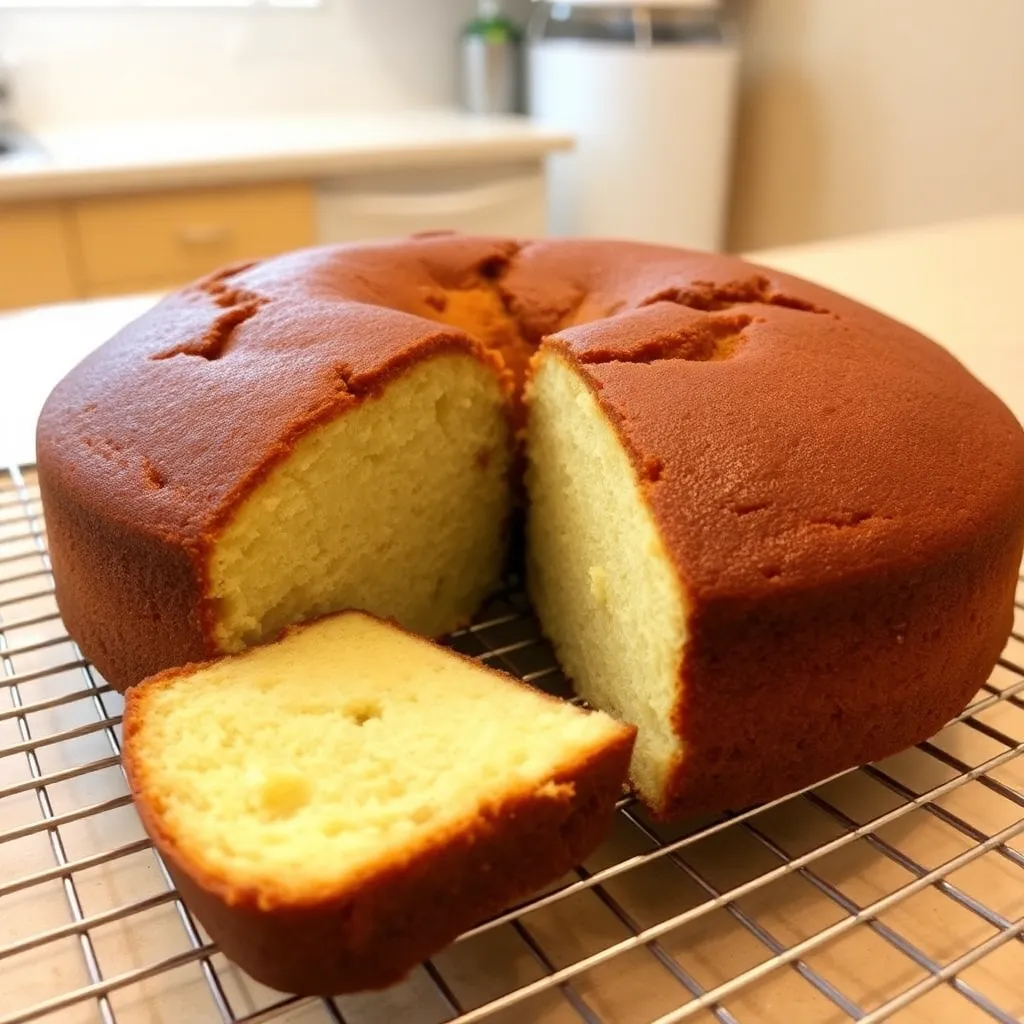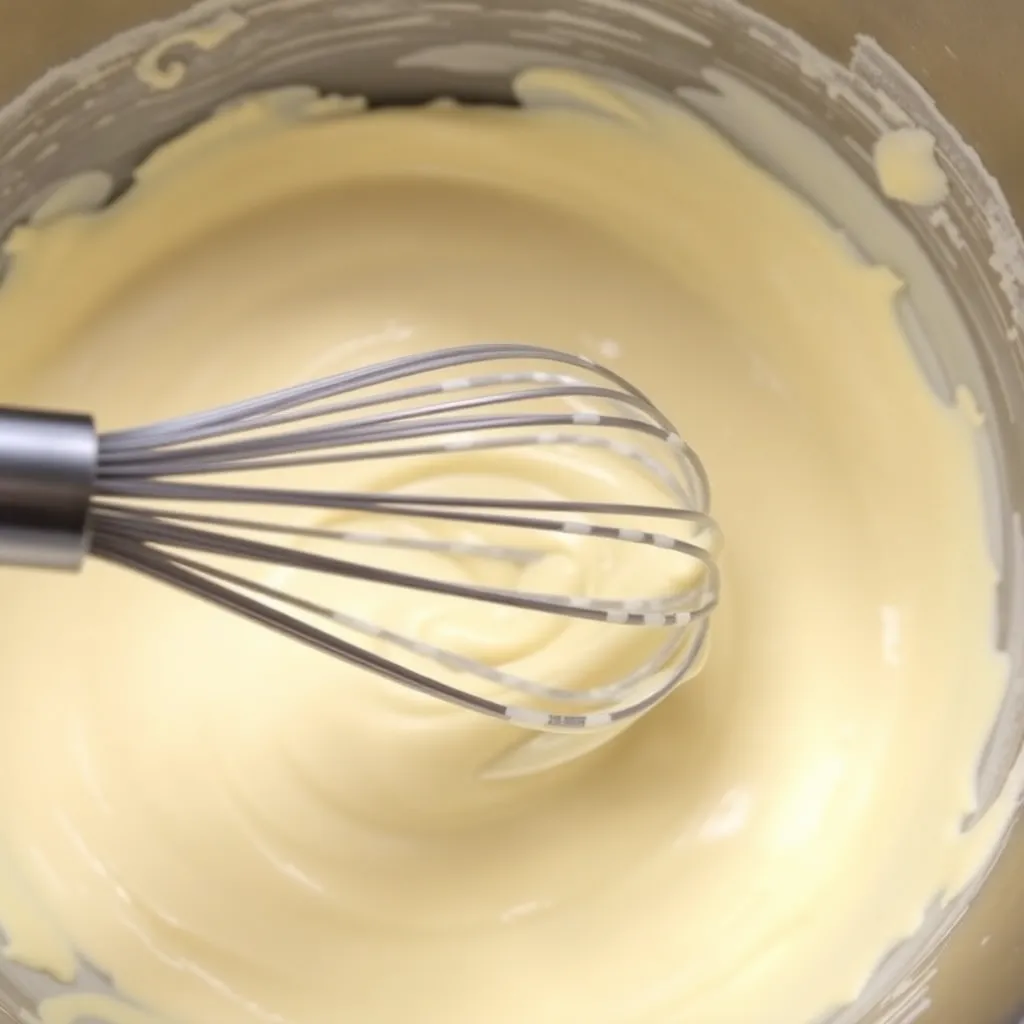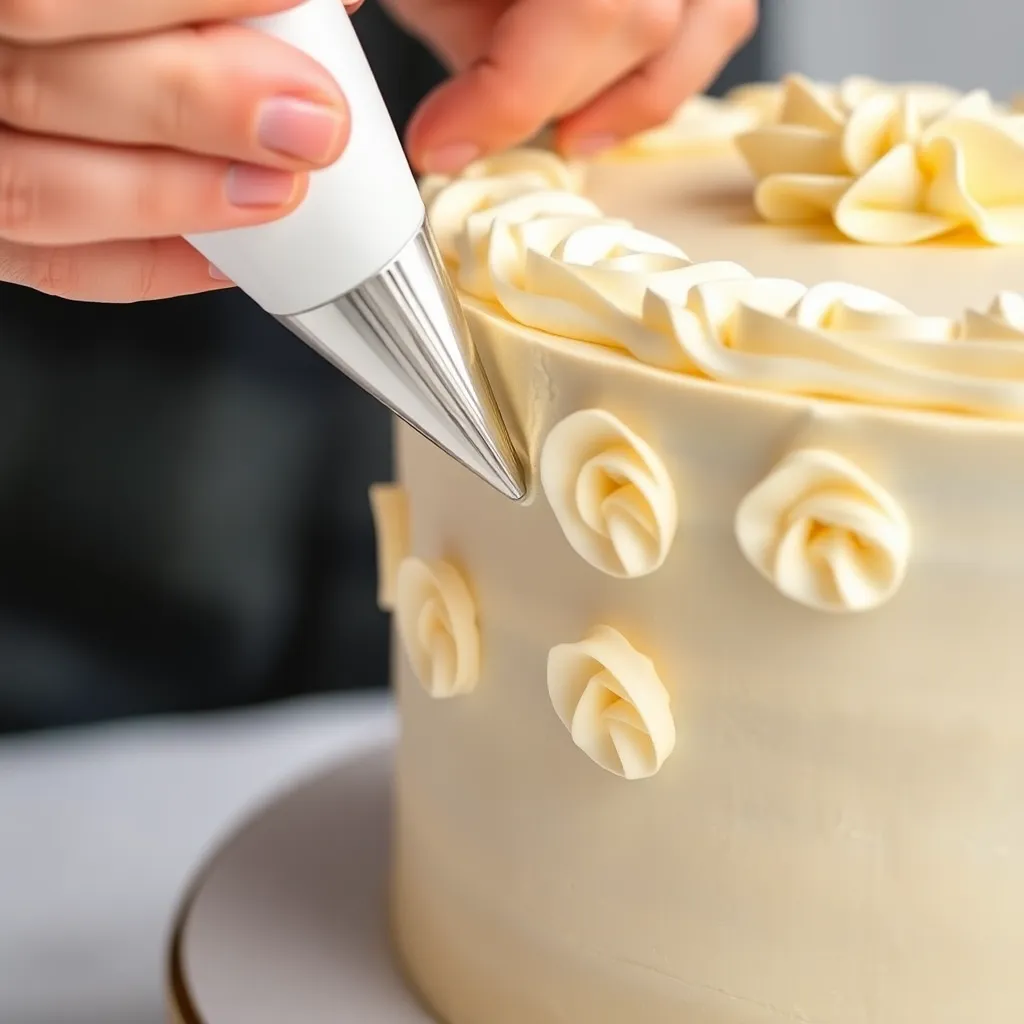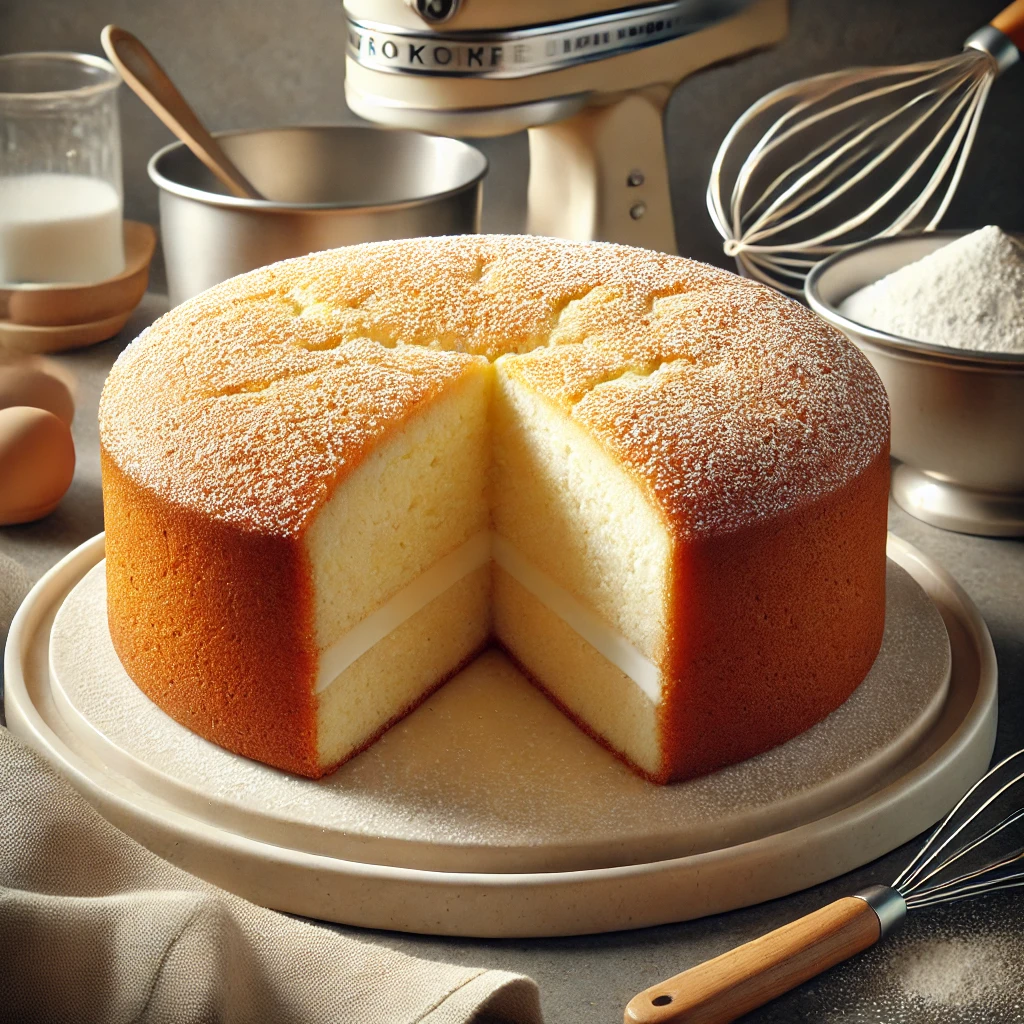Baking a cake in a home economics class is not only fun but an essential skill for anyone learning about culinary arts and kitchen skills.
A simple home economics class cake recipe can serve as a perfect introduction to the world of baking, helping students build confidence and gain valuable knowledge about how to make easy cake recipes.
This guide will walk you through the steps of making a best home economics class cake recipe, providing helpful tips and insights for beginners.
By the end of this article, you’ll be ready to bake and decorate your own homemade cake!
SEE ALSO : Ninja Creami Recipes

Home Economic Class Cake Recipe
Equipment
- 2 Mixing Bowls At least two (one for dry ingredients, one for wet ingredients).
- 2 Measuring Cups and Spoons or accurate measurement of flour, sugar, liquids, and other ingredients.
- 1 Electric Mixer or Whisk To cream butter and sugar and mix the batter.
- 1 Rubber Spatula For scraping down the sides of the bowl.
- 1 Sieve Optional, for sifting flour to remove lumps.
- 1 Cake Pan One 8-inch (20 cm) round cake pan for this scaled recipe.
- 1 Parchment Paper (optional) For lining the cake pan to prevent sticking.
- 1 Oven Preheated to bake the cake.
- 1 Toothpick or Cake Tester o check for doneness.
- 1 Cooling Rack For cooling the cake after baking.
Ingredients
- 1 ¼ cups (155g) All-purpose flour
- 1 ¼ tbsp. Baking powder
- ¼ tbsp. Salt
- ⅓ cup (75g) Unsalted butter
- ¾ cup (150g) Granulated sugar
- 2 tbsp. Large eggs
- ½ tbsp Vanilla extract
- ½ cup (120ml) whole milk
Instructions
- Preheat the Oven: Preheat your oven to 350°F (175°C). Grease and flour one 8-inch round cake pan or line it with parchment paper.
- Mix Dry Ingredients: In a medium-sized bowl, whisk together 1 ¼ cups flour, 1 ¼ teaspoons baking powder, and ¼ teaspoon salt. Set aside.
- Cream Butter and Sugar: In a large bowl, beat together ⅓ cup softened butter and ¾ cup sugar using an electric mixer until light and fluffy (about 2-3 minutes).
- Add Eggs and Vanilla: Add 2 large eggs one at a time, beating well after each addition. Then, stir in ½ tablespoon vanilla extract.
- Combine Dry and Wet Ingredients: Gradually add the dry ingredients into the butter mixture, alternating with ½ cup milk. Start and end with the dry ingredients. Mix gently until just combined—don't overmix.
- Pour and Bake: Pour the batter into the prepared pan, smoothing the top with a spatula. Bake in the preheated oven for 20-25 minutes, or until a toothpick inserted into the center comes out clean.
- Cool: Allow the cake to cool in the pan for about 10 minutes. Then, remove it from the pan and transfer it to a wire rack to cool completely.
- Serve: Once cooled, you can frost or serve as is. Enjoy your homemade cake!
Notes
- Measuring Ingredients: Accurate measurements are important for the texture of the cake. Use dry measuring cups for flour and sugar, and liquid measuring cups for milk.
- Room Temperature Ingredients: Ensure that the butter, eggs, and milk are at room temperature before starting. This helps the ingredients blend more evenly and results in a smoother batter.
- Don’t Overmix: When combining the wet and dry ingredients, mix until just combined. Overmixing can lead to a dense cake texture.
- Baking Times May Vary: Oven temperatures can vary. Check the cake by inserting a toothpick in the center after 20 minutes of baking. If it comes out clean, the cake is done.
-
Substitutions:
- Butter: You can substitute with vegetable oil, though this may slightly alter the texture.
- Milk: You can use non-dairy alternatives (like almond or oat milk) for a dairy-free option.
- Vanilla Extract: For a different flavor, you can use almond extract or lemon zest.
- Cooling Time: Let the cake cool for 10 minutes in the pan before removing it to prevent it from breaking. If you plan to frost it, ensure it’s completely cool to avoid melting the frosting.
- Frosting Options: This cake pairs well with a simple frosting, like buttercream or cream cheese frosting, or can be served plain with a dusting of powdered sugar.
-
Make It a Layer Cake:
If you want a taller cake, you can double the recipe and bake it in two pans. After baking, layer and frost the cakes for a more elaborate dessert.

Key Takeaways of home economics class cake
- Learning to bake a cake helps develop essential kitchen skills like measuring ingredients, mixing, and oven management.
- You will gain confidence in baking simple sweet treats while following a clear, step-by-step recipe.
- Understanding basic baking principles is vital for mastering the art of cake making.
Benefits of Learning Cake Baking in Home Economics
Learning to bake a cake in home economics helps students develop a range of important life skills, such as:
- Kitchen skills: From measuring ingredients to using baking tools. students improve their basic culinary knowledge.
- Culinary arts fundamentals: Students learn key techniques for cake making that they can apply to other recipes in the future.
- Confidence building: Baking is a great way to boost self-confidence in the kitchen, as students can see their hard work result in a delicious finished product.
Essential Kitchen Safety Guidelines Cake of home economics
Before starting, make sure to follow kitchen safety guidelines to ensure a safe and enjoyable baking experience:
- Wear proper clothing: Always wear an apron to protect yourself from splashes and spills.
- Use oven mitts: Always use oven mitts when handling hot pans or trays.
- Keep workspaces tidy: Clean as you go to avoid any accidents, such as slips or cuts.
- Handle knives with care: Use sharp knives carefully, and store them safely.
Understanding Basic Baking Principles
To make a successful home economics class cake recipe, understanding some basic baking principles is crucial:
- Leavening agents (like baking powder) are what make the cake rise.
- Creaming butter and sugar creates air in the batter, helping the cake to be light and fluffy.
- Alternating dry and wet ingredients ensures the cake’s texture remains smooth and even.
Measuring and Preparation Tips
Accurate measurement of ingredients is key to the success of any easy baking recipe. Here are some tips for preparing your ingredients:
- Measure flour correctly: Spoon flour into the measuring cup and level off the top. Don’t pack it in.
- Room temperature ingredients: Ensure that your butter, eggs, and milk are at room temperature to create a smooth batter.
- Preheat your oven: Always preheat the oven to the correct temperature before putting the cake in to ensure even baking.
Ingredient For Home Economics Class Cake
If you’re missing an ingredient or want to make some changes to the recipe, here are some common substitutions:
- Butter: You can substitute with oil or margarine, though this might slightly change the texture.
- Milk: Non-dairy milk like almond or soy can be used if you prefer a dairy-free option.
- Eggs: For a vegan alternative, try flaxseed meal mixed with water or a commercial egg replacer.

Storage and Freshness Guidelines
To keep your cake fresh and delicious:
- Store your cake at room temperature, covered with plastic wrap or in an airtight container for up to 2-3 days.
- If you need to store it longer, consider refrigerating or freezing it.
- Frosted cakes should be kept in a cool place to prevent the frosting from melting.
Oven Preparation Methods
For optimal results:
- Preheat the oven: Always preheat your oven to the recommended temperature before baking.
- Positioning in the oven: Place the cake in the center of the oven to ensure even heat distribution.
Timing and Testing for Doneness

To check if your cake is ready:
- Insert a toothpick or cake tester into the center of the cake. If it comes out clean, the cake is done.
- Baking times may vary slightly depending on your oven and the pan you’re using, so start checking at the lower end of the recommended time.
Common Baking Mistakes to Avoid
- Overmixing the batter: This can result in a dense cake. Mix just until the ingredients are incorporated.
- Underbaking: Always check for doneness by testing with a toothpick.
- Using incorrect pan size: Stick to the recommended pan size to avoid uneven baking.
Frosting Application
Frosting adds an extra touch to your cake. Here’s how to apply it properly:
- Let the cake cool completely: This prevents the frosting from melting.
- Apply a thin crumb coat: This helps seal in crumbs and gives a smoother finish for the final layer of frosting.
- Smooth the frosting: Use a spatula to evenly spread frosting on the top and sides of the cake.
Piping Techniques
For a professional touch, try these simple piping techniques:
- Use a piping bag with a round tip to pipe decorative borders or rosettes.
- Pipe flowers or text for special occasions like birthdays.
EXPLORE MORE : Hotcake Mix Recipe
Simple Design Ideas
You don’t need to be a professional decorator to create a beautiful cake. Some easy designs include:

- Sprinkles: Cover the top or sides with colorful sprinkles for a fun look.
- Fresh fruit: Add slices of strawberries, blueberries, or citrus for a fresh, vibrant look.
Texture Problems and Solutions
If your cake doesn’t turn out perfectly, here’s how to fix common issues:
- Dense texture: This can be caused by overmixing or adding too much flour. Ensure accurate measurements and mix gently.
- Cracked top: This can happen if the oven temperature is too high. Try reducing the heat slightly next time.
Fixing Failed Cakes
Even if things go wrong, don’t worry! Here are some solutions:
- Cake didn’t rise: Check that your baking powder is fresh, and you haven’t overmixed the batter.
- Cake is too dry: Add a bit of syrup or frosting on top to add moisture.
Proper Cooling Methods
Allow the cake to cool completely on a wire rack before frosting or serving. This prevents it from becoming soggy or breaking apart.
Presentation Ideas for Special Occasions
Make your cake stand out with some simple but effective presentation ideas:
- Decorate with flowers: Fresh flowers, like roses or daisies, can add a beautiful touch.
- Use cake toppers: Personalized toppers are great for birthdays or celebrations.
FAQ’s
Learning to bake helps students gain culinary arts skills, boosts confidence, and prepares them for future baking projects.
Essential tools include mixing bowls, measuring cups, a whisk or electric mixer, an oven, and a cake pan.
Basic ingredients include flour, sugar, butter, eggs, milk, baking powder, and vanilla extract.
Mix gently, alternating wet and dry ingredients, and be careful not to overmix to keep the cake light.
Follow the recipe’s oven temperature, check for doneness with a toothpick, and avoid overbaking.
Add frosting, sprinkles, or fresh fruit for simple yet beautiful decoration.
Common issues like dense texture or uneven baking can be fixed with proper measurements and correct oven settings.
Yes! Feel free to experiment with flavors, fillings, and frostings to make the cake your own.
Store it in an airtight container at room temperature, and serve with a hot drink or as part of a dessert table.
By following these steps, you’ll master the art of cake baking in your home economics class.
This easy home economics class cake recipe is a perfect starting point for anyone looking to learn more about culinary arts and develop their kitchen skills.
Enjoy baking and decorating your best home economics class cake recipe!

